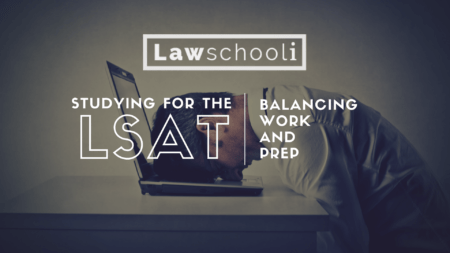If you are having trouble with logical reasoning point at issue questions (also called “disagreement” or “identify the disagreement” questions), you are likely getting distracted too much by thinking about argument structure, or you are falling for crafty wrong answers. We can help you.
In point at issue questions, you have two opposing arguments, two authors who disagree on something. You have to figure out what exactly they disagree over. This sounds easy, but the LSAT lays a lot of traps.
Identifying Point At Issue Questions
“Point at issue” questions will have a question stem that asks you to identify a point of contention between the two “authors” (the two speakers in the stimulus). Here are some examples:
“The statements above provide the most support for holding that the authors would disagree with which of the following statements?”
“[Speaker A] and [Speaker B] disagree over”
“Which of the following best describe the point at issue between [Speaker A] and [Speaker B].”
“[Speaker A] and [Speaker B] disagree over the truth of which the following statements.”
Point At Issue Question Strategies
Your main task in doing these questions is to identify what the two speakers overlap on. The right answer is going to be something they disagree on; everything else isn’t. As a tutor, the biggest thing I saw on these was students picking an answer that one of the speakers doesn’t even address. We can’t know if someone disagrees with something if they don’t even address it!
I think students walk into this big trap because they try to think about what each author is trying to say–their main point–and try to mix those two main points into some disagreement. This isn’t always the case. You have to identify one concrete thing that these two disagree over. It’s not always going to be each author’s main point — in fact, it’s very likely not (that would be too easy).
Don’t think about it like you are weighing two equal arguments or anything like that. Think instead about what the second argument says in response to the first. There will be overlap. Definitely check out your Logical Reasoning Bible for help with these, as it works through solving these with some real example problems.
Here’s some specific stuff to think about when doing these problems. Try to keep some of these in your head while doing the problems, and it will help you avoid mistakes:
- It’s useful to go into the answer choices with a good prephrase already in hand. This will help you avoid getting distracted by wrong answer choices. This prephrase is your own interpretation about what speaker B disagrees with Speaker A about.
- Speaker B will not necessarily disagree with Speaker A’s main point (conclusion). In fact, he will more commonly disagree with just one premise of Speaker A’s argument or the logic used to arrive at the conclusion.
- Speaker B will not often use exactly the same language as Speaker A to disagree with the point. That would make the problem too easy. Whereas speaker A might say, “algae-farming is carbon neutral”, speaker B might say that ‘algae-farming causes a net gain of atmospheric carbon, as more efficient carbon removing organisms are displaced when developing the land for this use.” There will be some challenging language. You have to hack through it.
Identifying Incorrect Answers
Perhaps the hardest part of these questions is not getting thrown off by the trap answers. Here’s a look at common types of trap answers on POI questions:
- Topic discussed by one of the speakers but not the other.
- Something that they actually agree on.
- Something totally unrelated to the two arguments. These usually alter either of the passage author’s arguments in some subtle way so that it looks like it’s something they discussed, but it isn’t. Generally the speakers disagree at the level of least specificity. Avoid answers that make them commit to more than they did.
This last one is the really tricky one. Look for little changes to language that distort their actual positions.
Also, catch yourself if you are trying to think, “okay, how would Speaker B feel about this based on what he has said.” You don’t want to put words in their mouths, so to speak, or you’ll get yourself into trouble. Identify what they did actually talk about, not how you think they would feel about something.
To see these questions in action, check out the aforementioned Logical Reasoning Bible, or drill this problem type in the Logical Reasoning Bible Workbook.
If there is some LR problem type, you are having issues with. Let us know in the comments. We are happy to do a write-up on strategy for that question type.
This lesson is excerpted from our Mastermind Study Group. If you want to join, here’s how it works. You self-study (cheap!), but we are there to guide you every step of the way with premium lessons and coaching. Access us through the private forum or during live office hours. Join HERE.
LSAT Logical Reasoning Lessons





5 Comments
Hi Evan,
I usually have trouble with any LR question that has two speakers. I have trouble with this type, and a less common type where the stem asks how one speaker interpreted (usually misinterpreted) the other speaker’s argument. Any tips on how to navigate these questions more easily? Thanks 🙂
Hi Evan,
I am having a heck of a time with ‘weakens EXCEPT’ problems as I close in on the June LSAT. I know that it should be simpler than I am making it, but I get incredibly hung up and am now having anxiety just over seeing them because I recognize the weakness. Do you have any pointers that could help out?
Thanks so much,
Alysha
This is a great and thorough explanation of this type of question!
Do you have one for the “flaw” type question? It would be awesome!
Thanks!
Jean
Hi Jean, no problem.
I’ll definitely do that within the next couple weeks. I might have to break it into a couple posts because that’s a huge topic.
Awesome!